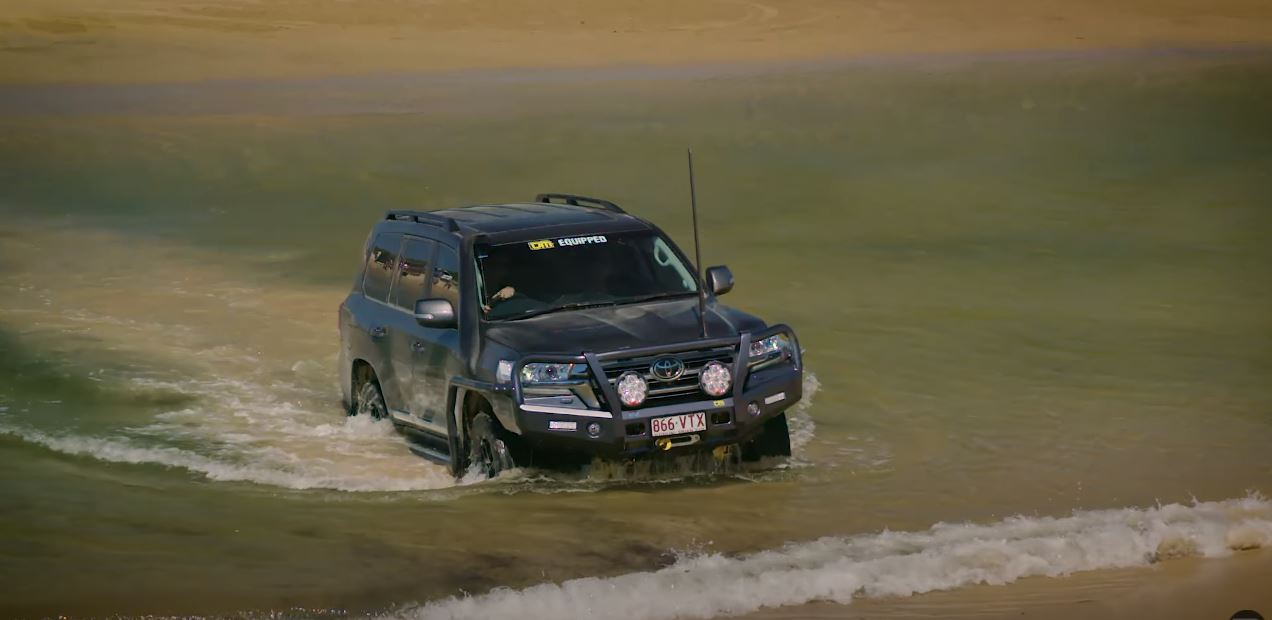Water Crossings
How to Safely Tackle Water Crossings
Even for experienced 4WD enthusiasts, 4×4 water crossings is never an easy task. Some 4WD tracks, particularly in northern Australia, require you to cross many rivers and each one takes a decent amount of time. Proper planning and preparation needs to be undertaken before crossing any water with your 4WD to ensure you and your vehicle reach the other side without causing any damage. I’ve come across many 4WD owners who don’t have any idea how to tackle water crossings, so today we’ll be shedding some insight into the topic by offering you a step-by-step guide. A great resource is Parks Australia
Planning
The first point to note is that you need to give your 4WD time to cool down. The combination of hot metal and cold water can cause heaps of vehicle damage, whether it’s a cracked radiator or a damaged cooling fan. When you reach the water crossing, take some time to let your 4WD cool down and walk through the water so you can get an understanding of the depth, the surface, the speed of the water, and to mark any obstacles or holes with a stick. Picking your line is a vital part of the process as the difference between getting bogged and reaching the other side safely can only be a few centimetres!
Knowing your vehicle
Do you know what your vehicle’s wading depth is? Do you know where the air intake is located? Most modern 4WD’s only have a wading depth of between 400mm and 800mm (how far your vehicle can submerge without any damage), which isn’t really much is it? Having a snorkel is always recommended for water crossings as it raises the air intake above the engine bay. Keep in mind that if water enters your engine bay you’ll be looking at very expensive, if not terminal damage to your engine.
Preparing your vehicle
Prior to entering the water, it’s recommended to spray all the electrics under the bonnet with WD-40 or a similar water repellent, particularly if you have a petrol 4WD. If you have a viscous coupling fan, tie it with a piece of string to stop it from rotating, otherwise you’ll need to disconnect the fan belt to stop if from damaging your radiator.
Wind all windows down and have seat belts unfastened in case of an emergency. If you need to exit the vehicle for any reason, you won’t have to open any doors which will allow water to flood the interior of your 4WD. Your recovery equipment should also be in an accessible location so you can quickly grab it if needed.
Driving across the water
Once you’ve prepared your vehicle, enter the water in second gear low range and always maintain a steady and constant speed. Second gear low range will give you good control over your vehicle so you can create a bow wave which helps keep water from the engine bay. If you drive too fast, water will come up over your bonnet but if you drive too slowly, you’ll lose your bow wave.
Never change gears while you’re in the water. Similar to driving on rocks, you need to feel what’s under your wheels and respond appropriately. If you hit a rock and lose forward momentum, slowly reverse a couple of feet ensuring you don’t push water up your exhaust pipe and into your engine, then have a spotter guide you around the rock. If you stall, restart the engine after disengaging the gears without using your clutch. If it doesn’t start, you’ll have to look at recovering with a winch off a tree that you’ve already strategically selecting during your planning!
Exiting the water crossing
Once you’ve reached the other side safely, it’s important that you don’t just drive off smiling and full of confidence! It’s best to stop and drain the water from your vehicle, check the gearbox, transfer case, and differentials for any water infiltration, and dry out your brakes. Make some sharp accelerations followed by heavy braking, or lightly drag the brakes whilst slowly moving forward. You’ll need them for your next hill descent!
The key to 4×4 water crossings is taking your time to plan and prep your vehicle and keeping a steady and constant speed while you’re in the water. Always have your recovery gear ready just in case, and always take extra precaution. Even the most experienced 4WDers sometimes need to winch their way out of water!
If you have any questions about water crossings in your 4WD or you’re interested in buying a snorkel to make it easier, reach out to the experts at TJM Dandenong by phoning 03 9792 1116.












